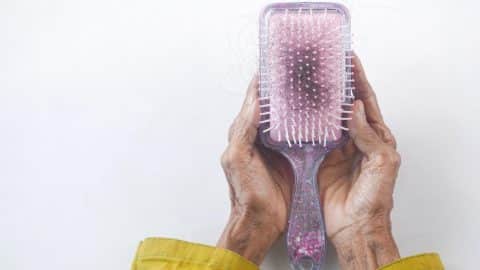As we age, our bodies naturally begin to slow down. Our joints stiffen, mobility becomes limited, and tasks that once felt effortless, like climbing up a set of stairs, can become uncomfortable and painful.
This is especially true for seniors who experience frequent joint pain in their knees, hips, back, or limbs. The elderly are especially susceptible to this because their musculoskeletal system slowly degrades over time.
With age, joints and ligaments become less mobile and more prone to inflammation and oxidative stress.
On a physical level, this can manifest as stiffness and pain, and the severity can be quite intense in some individuals. These symptoms can drastically impact a senior’s quality of life, and it can be debilitating enough to interfere with daily function.
The good news? There are various ways seniors can cope with their joint problems and reduce the inflammation in their joints. While many of these remedies are clinical, there are also various natural solutions that these seniors can take to deal with symptoms of joint pain.
If you or a loved one is experiencing arthritis or arthritis-like symptoms and is looking for ways to manage it, you’re in the right place. We’ll give you a rundown on some effective natural remedies that can ease joint pain in seniors.
Let’s take a look at some of the most popular herbal remedies for joint pain.
Symptoms of Joint Pain
Joint pain is a collective term that refers to any type of discomfort, aching, or soreness in a person’s joints. However, many go far to include a range of related symptoms beyond the pain.
Let’s take a look at some of the most common symptoms of joint pain comprehensively:
- Persistent or intermittent aches in one or multiple joints
- Swelling and tenderness in the joints
- Stiffness in the joints after a period of rest
- Warmth or redness in the joints
- A clicking sensation during joint movement
These symptoms can gradually worsen if left unchecked, making early recognition and intervention essential to keeping one’s joints in good condition. Fortunately, some natural solutions can help ease joint pain.
5 Natural Ways to Treat Joint Pain in Seniors
An increasing number of individuals with joint pain are turning to natural remedies to help manage and relieve their symptoms. Let’s take a look at seven of these alternative treatments that patients consider to cure joint pain in greater detail.
Anti-Inflammatory Diet
One popular way seniors manage their joint pain is by eating an anti-inflammatory diet.
This diet focuses on eating food items that contain ingredients that don’t exacerbate inflammation or other flare-ups that can worsen joint pain. Instead, it focuses on incorporating ingredients that help reduce systemic inflammation and ease symptoms of stiffness.
Some food types that are considered to be healthy in this diet include turmeric, fatty fish, leafy greens, berries, nuts, and olive oil. Furthermore, many herbs offered by Austral Herbs can be beneficial for people with arthritis, like turmeric.
On the other hand, sugar, red meats, and white bread are considered inflammatory and should be avoided.
This way of eating is a good way to keep the body healthy and reduce potential triggers. That said, always consult with your doctor if you have sensitivities or allergies that should be considered before switching your diet plan suddenly.
Acupuncture
Another alternative way to ease joint pain that can help relieve stiff joints is acupuncture. This is an ancient form of Chinese healing that increases blood flow in various parts of the body, helping reduce pain and joint inflammation.
Acupuncture is a targeted form of healing, and seniors can request this type of healing to target affected areas like the joints, knees, back, or neck.
This natural treatment plan is highly sought after because of its lack of side effects, even after multiple sessions. In essence, acupuncture therapy is a good supporting healing method for seniors to use on top of regular treatment.
Yoga
Engaging in light exercise is a great way to get the body moving and the blood pumping. Yoga is a particularly enticing activity for seniors experiencing joint pain since it keeps them active while not being extremely strenuous to their bodies.
The level of activity that seniors can undergo through yoga is enough to lubricate their joints and support their muscles, keeping them mobile and flexible, even with their age. Yoga, in particular, is all about being intentional with your positions and breathing. These conscious motions allow the body to explore its wide range of motion, helping make everyday tasks easier over time.
When done regularly, yoga can be a very effective way of keeping the body free from stiffness. Some great positions that can help include the cat-cow stretch, the bridge pose, and the child’s pose—but ask your yoga instructor about it. They can give you a specific pose to target your joint pain.
Heat and Cold Therapy
Heat and cold therapy are proven remedies seniors can try at home to reduce joint pain.
Heat therapy dilates blood vessels, increasing blood circulation and relaxing the muscles and tissues. Cold therapy does the opposite, signalling the nerves to tense up and reducing inflammation.
Alternating between hot and cold therapy—a process known as contrast therapy—can have benefits for joint pain sufferers. For instance, using a heated compress pad or going to a sauna, then switching to a cool ice pad or dipping in a cold plunge can help refresh the body and reduce feelings of joint pain.
Take Dietary Herbs or Supplements for Joint Healing
While diet and exercise form the foundation of joint health, natural medicines and supplements can also be useful in supporting seniors experiencing joint discomfort.
Here are a few notable examples:
- Aloe vera: Besides supporting digestion, aloe vera works well when it comes to soothing inflamed joints.
- Willow bark: Known as “nature’s aspirin,” willow bark contains salicin, which helps reduce pain and inflammation.
- Turmeric: This spice contains a compound called curcumin, which is a powerful anti-inflammatory substance that blocks inflammatory pathways linked to arthritis.
- Ginger: Acts as a natural COX-2 inhibitor, similar to NSAIDs, reducing joint pain and stiffness.
- Eucalyptus: Commonly used in topical creams or oils, eucalyptus has a cooling, anti-inflammatory effect when applied to swollen or stiff joints.
Before trying out these alternative ways to keep your joints strong, consider talking with a medical professional ahead of time to ensure that taking these remedies won’t interfere with any medication you may be taking now.
Traditional Remedies to Ease Joint Pain in Seniors
While alternative treatments can be effective in treating joint pain, there are a couple of medically-backed remedies that more assuredly help manage joint pain in seniors.
These traditional approaches are typically overseen by a physician. They are commonly prescribed to help improve the quality of life for patients managing this condition.
Here are these medically-backed treatment options:
- OTC pain relievers: NSAIDs like ibuprofen and naproxen sodium can reduce feelings of pain in the joints. Stronger NSAIDs that require a prescription may also be useful for more severe cases.
- Corticosteroids: Prednisone and other corticosteroids help reduce inflammation and flare-ups. They can be taken orally or injected into the joint. They’re effective but can cause potential side effects like brittle bones or weight loss, so be cautious of symptoms.
- PRP injections: This treatment plan uses the patient’s own plasma sample and injects it into the joint, promoting natural healing.
- Topical treatments: CGels like diclofenac gel can be applied to the affected area to provide relief from the pain. Capsaicin cream is another option that reduces pain by blocking substance P, a neurotransmitter involved in pain signalling.
- Joint replacement surgery: For seniors with advanced joint pain caused by osteoarthritis, joint replacement surgery may be recommended to restore mobility and improve the quality of life of the affected individual.
- Physical therapy: A physical therapist can help guide patients with targeted muscle-strengthening exercises to improve joint flexibility and reduce muscle tension.
By combining both natural and medical treatment plans, seniors with joint pain can live a happy, healthy, and fulfilling life despite their condition.
We hope this article will help you better manage your life with joint pain. Take care of yourselves!














